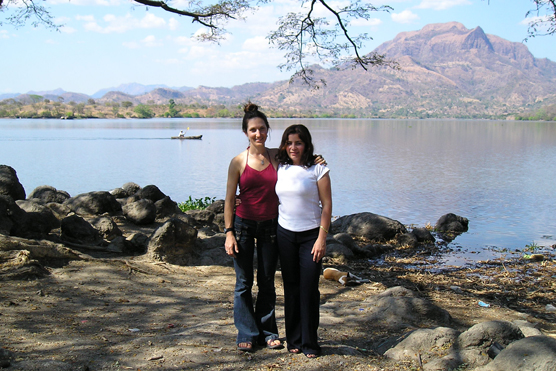Degrees of Service
BU among top feeder schools for the Peace Corps

Like most Peace Corps volunteers, Jacquelyn Caglia already had a long résumé of service when she began her two-year stint as a community health worker in the Dominican Republic. She’d delivered meals for the Community Service Center (CSC) Student Food Rescue, planted trees and repaired homes on alternative spring breaks, and worked for an education nonprofit as an Americorps volunteer.
“I’d always wanted to do some sort of international service,” says Caglia (CAS’02, SPH’06), who according to Peace Corps statistics shared something else with many of her fellow overseas volunteers — her Boston University pedigree. In the 2009 ranking of colleges and universities with alumni serving in Peace Corps posts, BU is first among graduate schools (with 17 alums currently volunteering) and 20th among undergraduate institutions (with 45 alums serving).
The news doesn’t surprise Joe Anzalone (SPH’92), the senior manager for practice-based education in the School of Public Health’s international health department, who helps master’s students choose a field practicum. Many of the students he advises end up enrolling in the Peace Corps Master’s International program, which allows students to combine their two years of service with earning a master’s degree. BU was one of the first schools to join the Master’s International partnership, in 1987.
“The Peace Corps experience is unique and comes out of a person’s spirit of service,” says Anzalone, “and BU is a great school for promoting the spirit of service.”
CSC manager Lindsey Wyld agrees, but adds that it takes something beyond a commitment to service to head off alone to remote villages for two years of work on projects ranging from agriculture to business development to environmental protection. “They need to be driven, independent, and have a passion for what they’re going into,” notes Wyld, who says that every year two or three of the thousands of students who volunteer through the center tell her they’re seriously interested in the Peace Corps.
“We are very proud that so many of our graduates choose to use their education to serve their country and the world community after graduation by joining the Peace Corps,” says Arts and Sciences Dean Virginia Sapiro. “We are especially proud, because we know how competitive it is to be accepted into the program.”
Indeed, the dismal economy is sharpening that competition, with budget constraints forcing the Peace Corps to cut about 400 volunteer slots worldwide at the same time that applications are up 16 percent from last year.
According to Anzalone, a significant number of Peace Corps veterans continue to work internationally after they return to the States. “It’s a common stepping-stone into development work,” he says. “We have a good handful of faculty here in international health who are returned volunteers.”
For her part, Caglia has gone on to direct communications and fundraising for the Waltham nonprofit Infante Sano, which is focused on improving maternal and newborn health in the Caribbean.
Likewise, fellow Peace Corps veteran Shanna Smith Solla (SPH’02) came home from Honduras and worked for the Kansas City–based nonprofit Children International, which asks people to sponsor individual children in the developing world.
“From my time in the Peace Corps, I totally understood what the lives of these children were like,” says Solla. “I had been able to see firsthand how similar sponsorship programs had impacted these communities in a positive way.”
BU’s Howard Thurman Center will host its annual Peace Corps meet-and-greet on Wednesday, February 18, at 7 p.m., at the center, in the lower level of the George Sherman Union, 775 Commonwealth Ave.
Chris Berdik can be reached at cberdik@bu.edu.
Comments & Discussion
Boston University moderates comments to facilitate an informed, substantive, civil conversation. Abusive, profane, self-promotional, misleading, incoherent or off-topic comments will be rejected. Moderators are staffed during regular business hours (EST) and can only accept comments written in English. Statistics or facts must include a citation or a link to the citation.